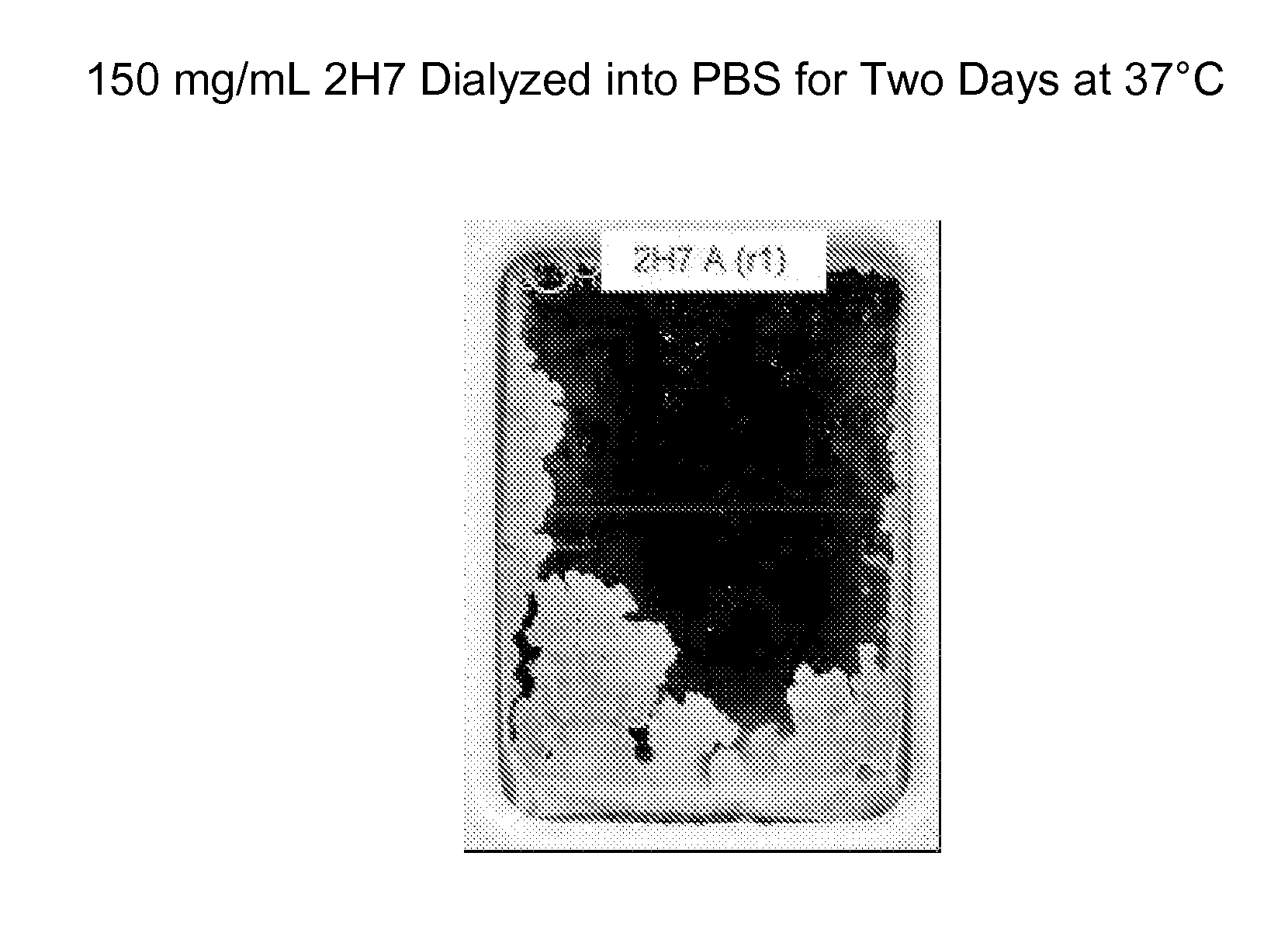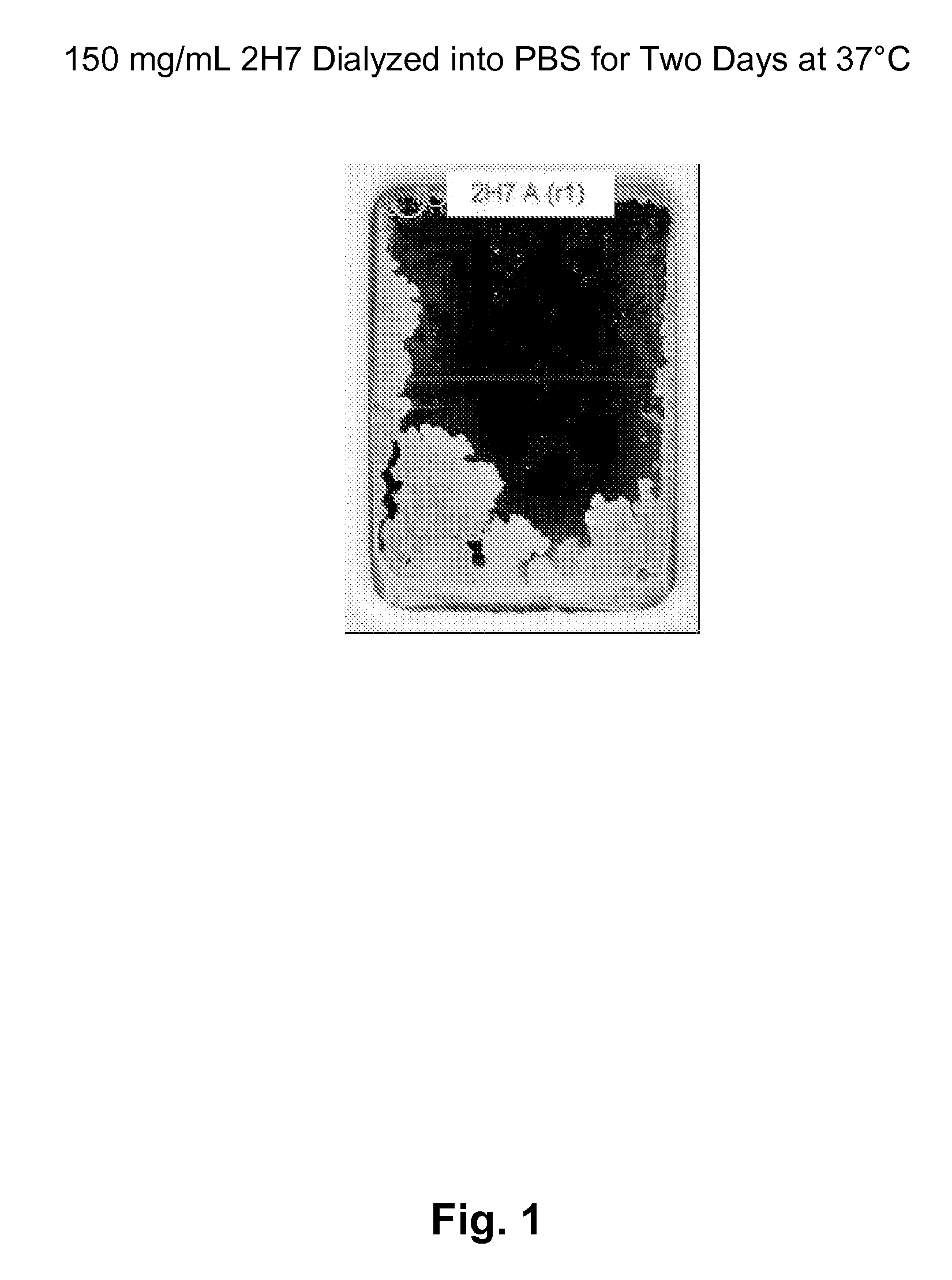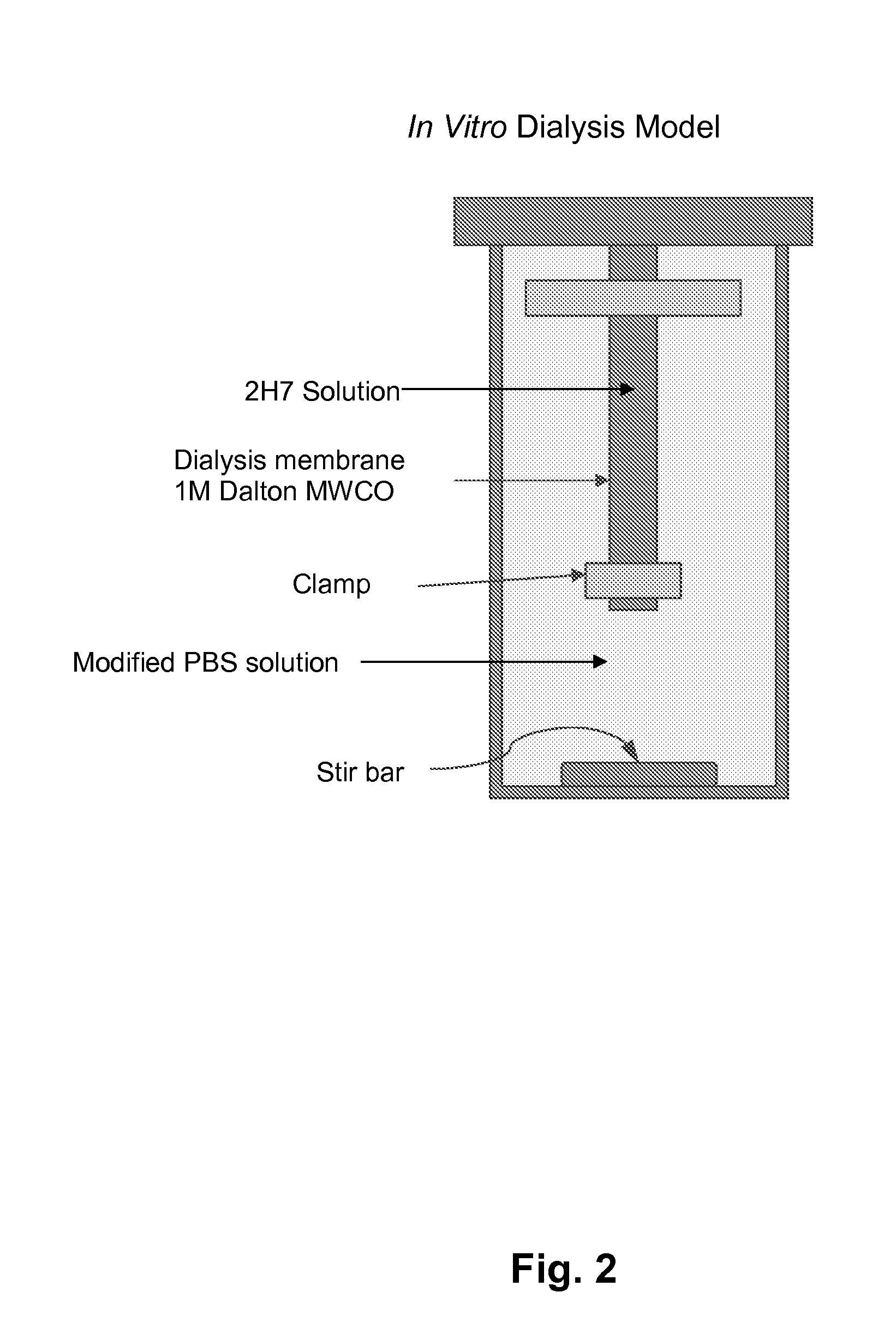Method and formulation for reducing aggregation of a macromolecule under physiological conditions
a macromolecule and physiological condition technology, applied in the field of physiological conditions for reducing aggregation of macromolecules, can solve the problems of preventing aggregation, inconvenient drug administration route, new challenges in drug formulation, etc., and achieve the effect of increasing the bioavailability of antibodies, improving or maintaining solubility or minimizing precipitation
- Summary
- Abstract
- Description
- Claims
- Application Information
AI Technical Summary
Benefits of technology
Problems solved by technology
Method used
Image
Examples
experimental examples
Example 1
Initial Subcutaneous Formulation for rhuMab 2H7
[0166]A high concentration subcutaneous formulation (150 mg / mL) was developed for rhuMAb 2H7. This formulation comprises 150 mg / ml 2H7, 30 mM sodium acetate; 7% trehalose dihydrate; 0.03% Polysorbate 20, at pH 5.3. This formulation is stable long term in the final vial storage under the recommended conditions. Administration of this material by subcutaneous injections in cynomolugus monkeys resulted in severe inflammation at the injection site and low bioavailability (≈30%). Mild to moderate macrophage infiltrate in the subcutaneous layer was observed in these animals. The cause of the irritation was attributed to foreign body material (i.e., 2H7 test material). Testing of this formulation under conditions that simulated what the product was exposed to at the injection site confirmed that the protein was significantly aggregated under physiological conditions (FIG. 1) corroborating the inflammation results observed in cynomol...
example 2
In Vitro Dialysis Method for Testing Macromolecule Aggregation Under the Physiologic Conditions of Subcutaneous Injection
[0167]An in vitro dialysis method was developed to test the ability of different excipients to reduce 2H7 aggregation under the physiologic conditions encountered during subcutaneous injection. A modified PBS solution was developed for this model to simulate the interstitial fluid. This in vitro system was used to evaluate the effect of sugars, polymers, surfactants, and amino acids in retarding 2H7 aggregation. Candidate formulations that showed improved product release in vitro were then tested in vivo (rat subcutaneous model; see Example 3) to determine if this improvement corresponded to decreased inflammation in vivo.
[0168]The set-up of the in vitro dialysis model is shown in FIG. 2. 250 ml glass jars wer filled with 220 ml modified PBS solution (167 mM Sodium, 140 mM Chloride, 17 mM Phosphate, 4 mM Potassium) at 37° C. 6 cm lengths of dialysis tubing (Spect...
example 3
In Vivo Rat Subcutaneous Model for Testing Macromolecule Aggregation
[0178]The rat subcutaneous model is a relevant model based on the similarity in character of the subcutaneous inflammation. The inflammatory response of rats receiving the original 2H7 formulation was consistent with the inflammatory response observed in the cynomologus monkeys (see Example 1). Immuno-histochemistry staining for human immunoglobulin was positive in sections of rat skin injected with 2H7, indicating the presence or persistence of the antibody in the areas of inflammation which supports the theory that precipitation of the test article caused inflammation at the injection site.
[0179]The in vivo rat screening assay was carried out as follows:
[0180]Each test or control formulation (0.25 ml) was administered subcutaneously. The animals were necropsied at 72 hours post dose. Skin sections at the injection sites were transected and fixed in formalin, and the effect of the test excipient on lowering inflamm...
PUM
| Property | Measurement | Unit |
|---|---|---|
| molecular weight | aaaaa | aaaaa |
| concentration | aaaaa | aaaaa |
| concentration | aaaaa | aaaaa |
Abstract
Description
Claims
Application Information
 Login to View More
Login to View More - R&D
- Intellectual Property
- Life Sciences
- Materials
- Tech Scout
- Unparalleled Data Quality
- Higher Quality Content
- 60% Fewer Hallucinations
Browse by: Latest US Patents, China's latest patents, Technical Efficacy Thesaurus, Application Domain, Technology Topic, Popular Technical Reports.
© 2025 PatSnap. All rights reserved.Legal|Privacy policy|Modern Slavery Act Transparency Statement|Sitemap|About US| Contact US: help@patsnap.com



